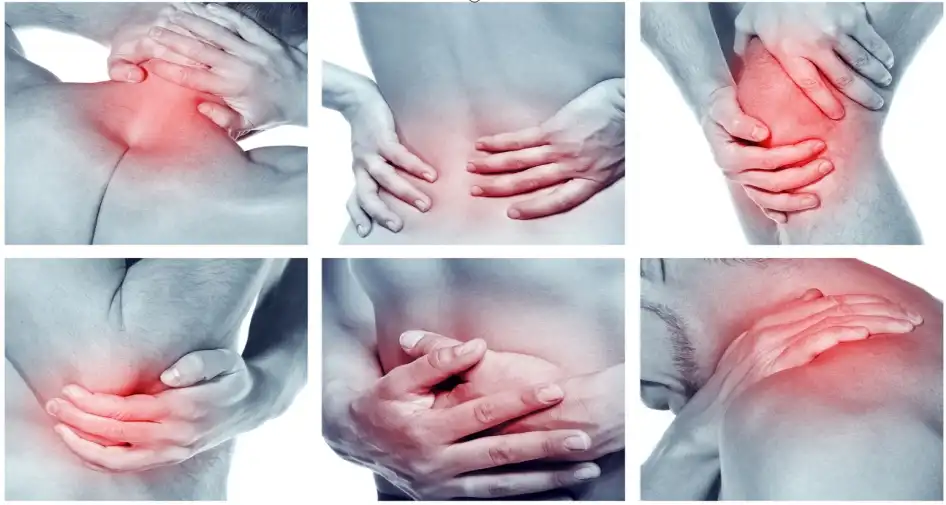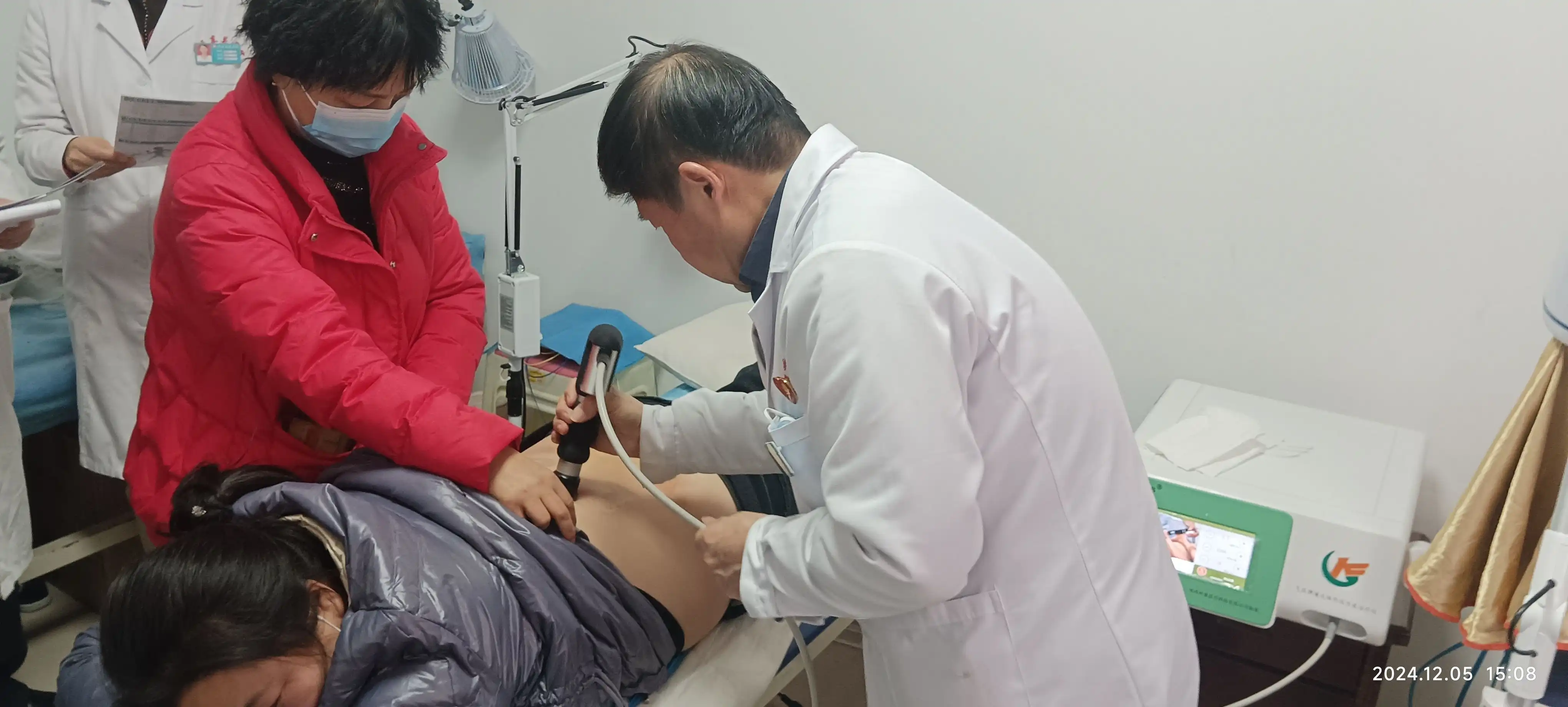How Painful Was Shock Therapy?
Shock therapy, more formally known as extracorporeal shock wave therapy (ESWT), has become an increasingly popular treatment option for a variety of medical conditions. As with any medical procedure, one of the most common concerns patients have is the level of pain associated with it. In this blog post, we'll explore just how painful shock therapy can be, with a particular focus on the Professional pneumatic shock wave therapy machine shockwave.

Understanding Extracorporeal Shock Wave Therapy (ESWT)
ESWT involves the use of high - energy sound waves that are generated outside the body (extracorporeal) and then directed towards the affected area. These shock waves penetrate the skin and underlying tissues, triggering a series of physiological responses. The primary goal of ESWT is to stimulate the body's natural healing processes. It can increase blood flow to the treated area, promote the release of growth factors, and break down scar tissue or, in the case of urological applications, kidney stones. This non - invasive treatment has shown great promise in treating musculoskeletal conditions such as tendonitis, plantar fasciitis, and even some cases of osteoarthritis.
The Role of the Professional Pneumatic Shock Wave Therapy Machine
The Professional pneumatic shock wave therapy machine shockwave is a sophisticated piece of medical equipment that is designed to deliver highly precise and controlled shock waves. It uses pneumatic technology to generate the shockwaves, which are then focused on the target area. This type of machine offers several advantages over other methods of shock wave generation.
Precision in Treatment
One of the key features of the Professional pneumatic shock wave therapy machine shockwave is its ability to precisely target the affected tissue. The shockwaves can be adjusted in terms of their energy level, frequency, and the area of focus. This precision means that the treatment can be tailored to the specific needs of each patient and the particular condition being treated. For example, when treating a small, localized area such as a tendon in the wrist, the machine can be set to deliver shockwaves with a narrow focus, minimizing the impact on surrounding healthy tissues.
Adjustable Energy Levels
The machine allows for the adjustment of the energy levels of the shockwaves. This is crucial as different conditions and patients may require different levels of energy to achieve the desired therapeutic effect. In general, more chronic or severe conditions may require higher energy levels, while milder cases can be treated with lower energy settings. The ability to customize the energy levels helps in optimizing the treatment while also managing the potential pain associated with the procedure.
Patient Experiences with Pain during Shock Therapy
The perception of pain during shock therapy can vary widely from patient to patient. There are several factors that contribute to this variability.
Treatment Area
The location of the treatment plays a significant role in how painful the procedure is perceived. Areas with less soft tissue and more exposed nerves, such as the heel in cases of plantar fasciitis or the elbow in tennis elbow, tend to be more sensitive to the shockwaves. Patients often report a more intense pain sensation in these areas compared to areas with more muscle or fat padding, like the thigh or the buttocks. For instance, a patient undergoing ESWT for plantar fasciitis may describe the pain as a sharp, stabbing sensation with each shockwave, especially when the treatment is focused on the thick, inflamed plantar fascia near the heel.
Condition Severity
The severity of the condition being treated also impacts the pain experience. Patients with more advanced or chronic conditions may experience more pain during shock therapy. In cases of long - standing tendonitis, where the tendon has been inflamed and damaged for an extended period, the tissue may be more sensitive to the shockwaves. The body's natural healing mechanisms may be overwhelmed, and the shockwaves may need to work harder to stimulate a response. As a result, the patient may feel a more intense discomfort during the treatment. On the other hand, patients with milder, early - stage conditions may experience only a mild discomfort or a feeling of pressure during the procedure.
Individual Pain Tolerance
Everyone has a different pain tolerance level, and this is a major factor in how painful shock therapy is perceived. Some patients may have a high pain tolerance and may describe the sensation as a mild discomfort or a "buzzing" feeling. These patients may be able to tolerate higher energy levels of the shockwaves without significant distress. In contrast, patients with a lower pain tolerance may find the procedure quite painful, even at lower energy settings. For example, a patient with a low pain tolerance may require breaks during the treatment or may need the energy level to be adjusted downwards to manage the discomfort.
Managing Pain during Shock Therapy
Despite the potential for pain, there are several strategies that can be employed to manage it during shock therapy.
Anesthesia and Analgesia
In some cases, local anesthesia may be used to numb the treatment area before the shock therapy begins. This can significantly reduce the pain felt during the procedure. For example, a numbing cream or an injection of local anesthetic can be applied to the skin over the treatment area. In addition, patients may be prescribed analgesics, such as non - steroidal anti - inflammatory drugs (NSAIDs), to take before or after the treatment to help manage any residual pain. However, the use of anesthesia and analgesia may vary depending on the patient's medical history, the treatment area, and the preferences of the healthcare provider.
Gradual Increase in Energy Levels
The healthcare provider may start the shock therapy with a low energy level and gradually increase it over the course of the treatment sessions. This allows the patient's body to adjust to the shockwaves and reduces the initial pain. For example, in the first session, the Professional pneumatic shock wave therapy machine shockwave may be set to a very low energy level, and as the patient becomes more accustomed to the treatment, the energy can be incrementally increased in subsequent sessions. This approach helps in minimizing the discomfort while still achieving the therapeutic benefits of the shock therapy.
Psychological Support
The psychological state of the patient can also impact their perception of pain. Providing psychological support, such as relaxation techniques and counseling, can help patients better cope with the pain. For instance, teaching the patient deep breathing exercises or guided imagery can help them relax during the treatment. A positive attitude and a sense of trust in the healthcare provider can also make a significant difference in how the patient experiences the pain.
Long - Term Benefits vs. Short - Term Pain
It's important to note that while shock therapy may cause some discomfort in the short term, the long - term benefits can often outweigh the pain. Many patients who undergo ESWT report significant improvement in their condition over time. For example, patients with chronic tendonitis may experience a reduction in pain, increased range of motion, and improved functionality of the affected limb. In cases of plantar fasciitis, patients may find that the heel pain that had been limiting their daily activities subsides, allowing them to walk and exercise more comfortably. The body's natural healing processes, stimulated by the shockwaves, continue to work long after the treatment sessions are completed, leading to long - term relief.

Shaanxi Miaokang Medical Technology Co., Ltd had R&d and produce Professional pneumatic shock wave therapy machine shockwave
is a comprehensive integrator engaged in medical instrument research and development, sales, medical technology research and promotion, and investment in medical institutions. The main research and development of medical ozone therapy equipment, extracorporeal shock wave therapy equipment and other products.
If you had any questions,feel free to contact us:Cathy@miaokang.ltd
In conclusion, the pain associated with shock therapy, particularly when using the Professional pneumatic shock wave therapy machine shockwave, can vary greatly depending on multiple factors. While the procedure may cause some discomfort, especially in certain treatment areas and for patients with lower pain tolerance, there are effective strategies to manage this pain. Moreover, the long - term benefits in terms of improved health and reduced symptoms make shock therapy a viable and often highly beneficial treatment option for many medical conditions. If you're considering shock therapy, it's essential to have an open and honest conversation with your healthcare provider about your concerns regarding pain and the overall treatment plan.






